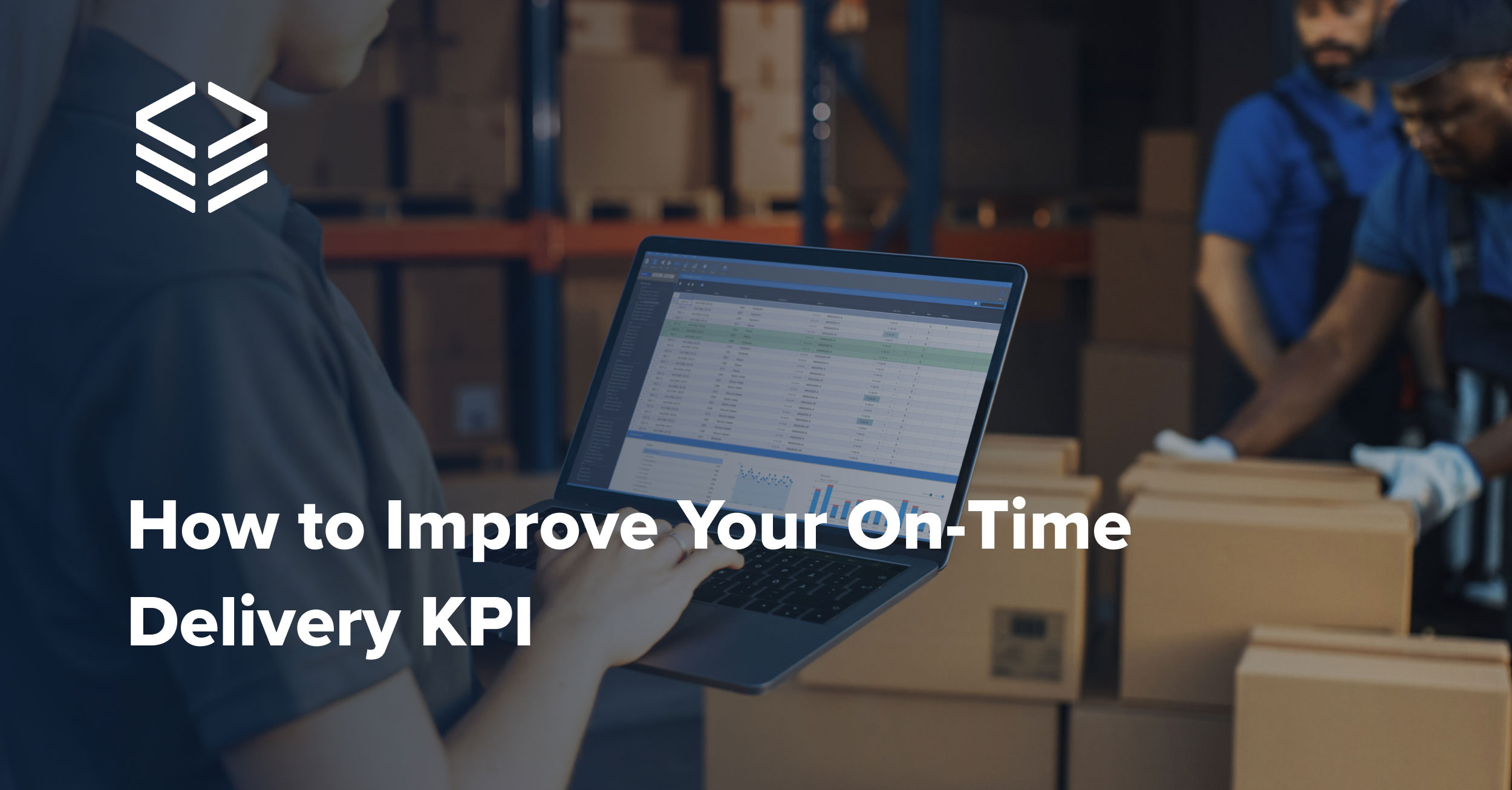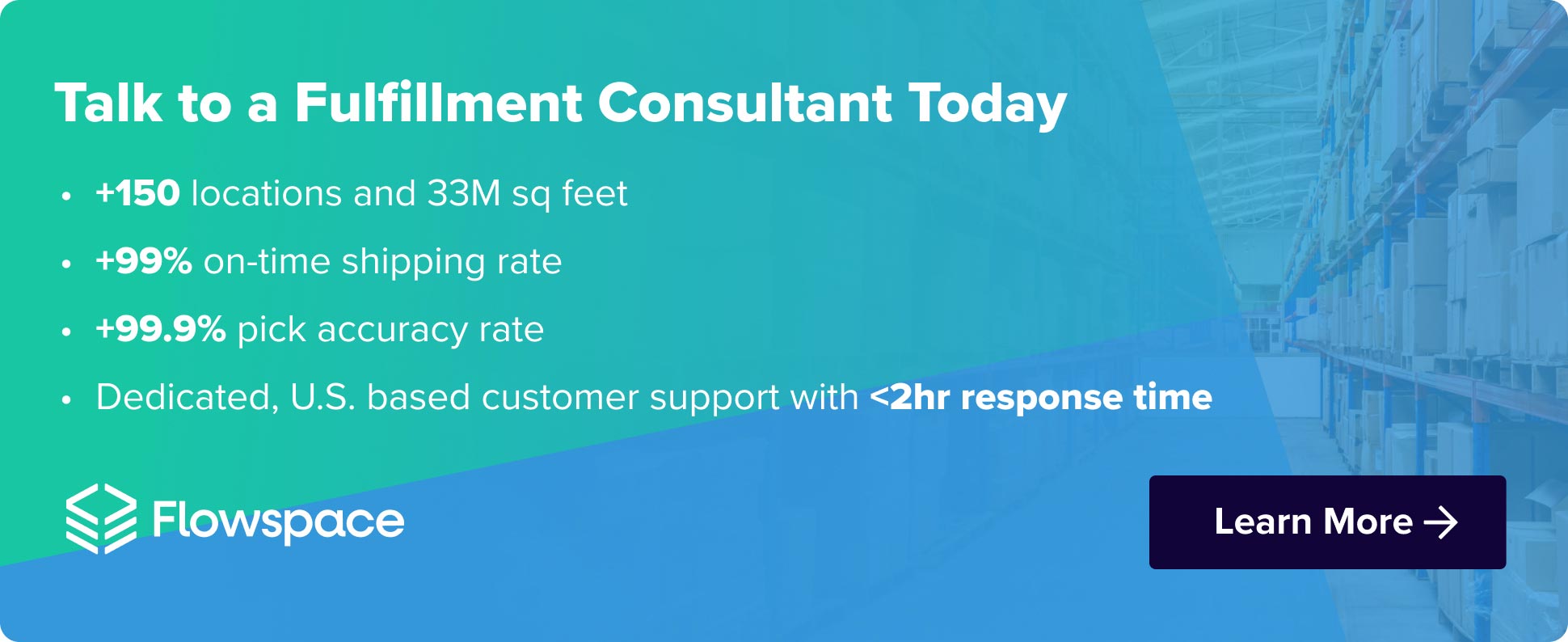
Ever experienced that heart-sinking moment when a missed delivery alert flashes across your screen? If you’re nodding, you’re in the right place.
Late deliveries can shake customer trust, possibly turning into a churn catalyst for your business. Let’s not allow logistics to take the fall.
On-Time Delivery (OTD) isn’t just an ecommerce KPI about getting packages to doorsteps before the clock strikes ten pm. It’s the culmination of an involved process, including meticulous planning, operational efficiency, and an unwavering commitment to the customer. Consistency with OTD signifies a promise kept, a deadline met, and bond of trust forged between your brand and its consumers.
Ready for some number crunching? Read on to learn more about how to calculate OTD and how brands can improve their own OTD metrics to ensure their customers get what they need exactly when they need it.
What Is On-Time Delivery?
On-Time Delivery (OTD) might seem straightforward, but its implications for e-commerce are profound. It measures the percentage of orders delivered within the timeframe communicated to the customer. This includes not just advertised windows, but also pre-order notifications and specific time commitments made during interactions.
Understanding OTD goes beyond tracking a number. It demands a nuanced perspective that factors in customer expectations, industry benchmarks, and operational realities. For example, same-day delivery promises must be interpreted within the context of logistical feasibility and geographic limitations.
By establishing a clear and consistent definition of OTD tailored to their target audience and operational capabilities, brands can navigate these nuances and deliver on customer expectations with precision. A crucial on-time delivery KPI to track is delivery metrics. Having up to date metrics on delivery performance can provide valuable insights and help e-commerce brands improve their delivery operation, improving customer retention with better customer service.
Understanding OTD and Its Business Impact
OTD is more than operational efficiency; it serves as a crucial KPI and potent indicator of overall business health and a driver of sustainable growth. Its impact manifests in multiple dimensions:
- Customer Satisfaction and Loyalty: Having a timely delivery process or having good delivery efficiency fosters trust, confidence, and positive brand perception. Conversely, late deliveries breed frustration, churn, and negative reviews, eroding customer loyalty and impacting repeat business. A study by Ponemon Institute reveals that 74% of customers switch brands after a single bad delivery experience. This underscores the critical role of OTD in fostering lasting customer relationships.
- Operational Cost Optimization: Delayed deliveries incur significant financial burdens. These include re-shipment expenses, refund costs, and increased customer service workload. Optimizing OTD minimizes these expenses, allowing for strategic resource allocation and reinvestment in growth initiatives.
- Brand Reputation and Competitive Advantage: In the digital age, word-of-mouth spreads quickly. Consistent OTD strengthens your brand’s reputation as reliable and customer-centric, enhancing your competitive edge and attracting new customers. Conversely, a reputation for delays can damage your brand image and impede market share growth.
The Direct Link Between OTD and Customer Loyalty
The relationship between OTD and customer loyalty is more than transactional; it’s deeply emotional. When a customer receives their order on time, it reinforces trust and reliability. This fosters positive brand association, encouraging repeat purchases and referrals.
Optimizing OTD fosters brand loyalty in several ways:
- Reduced Anxiety and Uncertainty: Timely deliveries eliminate the worry associated with waiting for an order. This instills peace of mind and strengthens the customer’s positive perception of your brand.
- Enhanced Convenience and Control: Predictable delivery schedules allow customers to plan their days effectively and integrate their purchases seamlessly into their lives. This increases convenience and perceived value.
- Positive Reinforcement and Reciprocity: Consistent OTD demonstrates commitment to customer satisfaction, nurturing a sense of reciprocity and encouraging positive brand sentiment.
Key Challenges in Achieving On-Time Delivery
Modern supply chains are intricate ecosystems, and navigating their complexities requires agility, foresight, and strategic problem-solving.
Navigating the Complexities of Modern Supply Chains
The days of linear, predictable supply chains are long gone. Today’s supply chains are globalized networks, with diverse transportation options and ever-evolving customer expectations. Managing this intricate patchwork requires robust collaboration between various stakeholders, from manufacturers and distributors to fulfillment centers and last-mile delivery providers.
Identifying and Addressing Common Delay Factors
Common delay factors that impact on-time delivery include:
- Stock-outs: Running empty on a popular item leaves customers waiting and frustrated. Accurate forecasting and tracking inventory management KPIs are key to keeping shelves stocked without overstocking. Learn how to avoid overstocking in our guide.
- Order fulfillment errors: Wrong or missing items add another layer of disappointment and delay. Streamlining processes, automating tasks, and ensuring system integration are crucial to error-free fulfillment. Look into how Flowspace’s order fulfillment software can help mitigate errors.
- Resource shortages: Not enough staff in the warehouse or insufficient transportation capacity can create major bottlenecks. Strategic hiring, reliable partner relationships, and accurate forecasting ensure resources are available when needed most.
- Delivery planning issues: Inefficient routes, lack of contingency plans for traffic or weather, and inflexible delivery options can throw schedules off track. Advanced software, factoring in potential disruptions, and offering flexible delivery windows help ensure timely arrivals.
Calculating On-Time Delivery KPI
Basic OTD Calculation Method
The most important OTD KPI is simple: Tt’s the percentage of orders delivered within the timeframe you promised. This includes advertised windows, pre-order notifications, and any specific time commitments you make. The components are:
- Total Orders: All orders placed in a specific period (e.g., week, month)
- On-Time Deliveries: Orders delivered within the promised timeframe
- On-Time Delivery Rate: (On-Time Deliveries / Total Orders) x 100
Exploring Various OTD KPIs
While the core OTD rate is crucial, it’s only one way of looking at it. Different situations call for different metrics, providing a richer picture of your performance. Here are some additional delivery performance KPIs:
- Early Delivery Rate: How often do you deliver faster than projected? This shows exceptional efficiency.
- Late Delivery Rate: Where are delays happening? This helps you pinpoint areas for improvement.
- Delivery Lead Time: How long does it typically take from order to doorstep? This reveals potential supply chain bottlenecks.
- Time-Based KPIs: Get granular and analyze deliveries within specific timeframes (e.g., same-day, next-day).
Importance of Time-Based KPIs in Last Mile Analysis
Time-based KPIs are key in the last mile because it can show the efficiency of this last step in the fulfillment cycle.
- On-Time Arrival Rate: What percentage of deliveries hit the promised last-mile window? This shows reliability and builds trust with customers.
- Average Delivery Time: How long does it typically take from warehouse to doorstep? This helps you optimize routes and resource allocation, reducing delivery costs.
- Real-Time Tracking: Give customers peace of mind and transparency with live tracking, enhancing the delivery experience and building loyalty.
Strategies to Improve On-Time Delivery
Optimized fulfillment processes that consistently deliver on promised timelines translate to satisfied customers, repeat business, and ultimately, sustained revenue growth. However, achieving consistent OTD requires proactive implementation of well-defined strategies.
The Role of Visibility and Automation
Reactive approaches leave little room for proactive optimization. Embracing real-time inventory visibility throughout your fulfillment chain is paramount. Invest in technology that provides granular insights into inventory levels, order processing stages, and delivery progress. Leveraging automation where feasible, from picking and packing to route optimization, minimizes human error and expedites workflows. This transparency and streamlining are the cornerstones of predictable OTD performance.
Optimizing Dispatch and Routing
Inefficient routing can easily derail even the most meticulously planned delivery service schedules. Implement advanced routing software that factors in real-time traffic conditions, distance, and driver capacity. Optimize dispatch schedules based on these dynamic inputs to ensure efficient delivery sequences and minimize unnecessary backtracking.
System Integration for Supply Chain Efficiency
Eliminate data silos and manual intervention by integrating your software platforms. This seamless flow enables orders to progress effortlessly through the chain, out the door, and onto doorsteps, minimizing delays caused by disconnected systems.
Effective Customer Expectation Management
Proactive and transparent communication is essential. Provide clear and accurate delivery windows, real-time tracking updates, and prompt notifications about any potential delays. By effectively managing expectations, you can mitigate inconveniences and build brand loyalty even when unforeseen circumstances arise.
Flexibility and Adaptability in Delivery Operations
Traffic congestion, weather events, and even customer requests can throw even the best-laid plans off course. Build flexibility and adaptability into your delivery operations. Consider alternative delivery routes, have backup drivers on standby, and offer options like flexible delivery windows or contactless delivery.
Leveraging Technology for Efficient On-Time Delivery
By strategically integrating cutting-edge solutions, you can optimize processes, enhance visibility, and ultimately, deliver a consistently satisfying customer experience. By strategically integrating technological advancements into operations, brands can unlock a new level of efficiency and customer satisfaction.
Utilizing AI and Machine Learning
Predicting the unpredictable is no longer science fiction. Artificial Intelligence (AI) and Machine Learning (ML) algorithms are revolutionizing the way we manage fulfillment.
These intelligent systems analyze historical data, real-time traffic patterns, and weather conditions to predict potential disruptions and proactively adjust delivery schedules. This proactive approach minimizes delays, reduces reliance on manual intervention, and ensures a more predictable OTD performance.
Learn more about AI in supply chain management in our blog.
Advantages of Smart Route Optimization
Traditional routing methods often fail to account for the dynamic nature of the last mile. Smart route optimization software powered by AI and real-time data changes the game.
By factoring in traffic congestion, weather events, and driver availability, these systems generate optimized delivery sequences, minimizing travel time, fuel consumption, and ultimately, missed deadlines. This data-driven approach not only improves OTD but also reduces operational costs and enhances driver productivity.
Ensuring Real-Time Tracking and Order Visibility
Real-time tracking and order visibility solutions bridge the gap between fulfillment and doorstep, fostering transparency and trust.
Imagine customers receiving proactive notifications about their order status, tracking the delivery in real-time, and even opting for flexible delivery options like contactless delivery. This level of customer engagement fosters loyalty and builds a positive brand image around your commitment to OTD excellence.
Flowspace’s Approach to On-Time Delivery
Flowspace transforms OTD from a target into a tangible reality through a strategic blend of technology, infrastructure, and expertise.
Flowspace’s Technological Edge in OTD
Flowspace’s fulfillment platform harnesses the power of Artificial Intelligence (AI) and Machine Learning (ML) to anticipate and overcome potential disruptions before they arise.
Dynamic route optimization software ensures the most efficient last-mile journeys, minimizing travel time and fuel consumption. Real-time tracking and order visibility keep customers informed and engaged, fostering trust and transparency throughout the delivery process. This comprehensive ecosystem seamlessly integrates with existing systems, delivering unparalleled transparency and operational efficiency.
Addressing Inventory and Fulfillment with Flowspace Solutions
Flowspace’s extensive network of strategically located fulfillment centers ensures product availability closer to customers, reducing lead times and minimizing the risk of stockouts. The platform offers a range of flexible fulfillment solutions tailored to specific needs, enabling businesses to scale their operations and streamline their supply chain for optimal efficiency.
Get in touch today to see how Flowspace can boost your on-time delivery rate.








